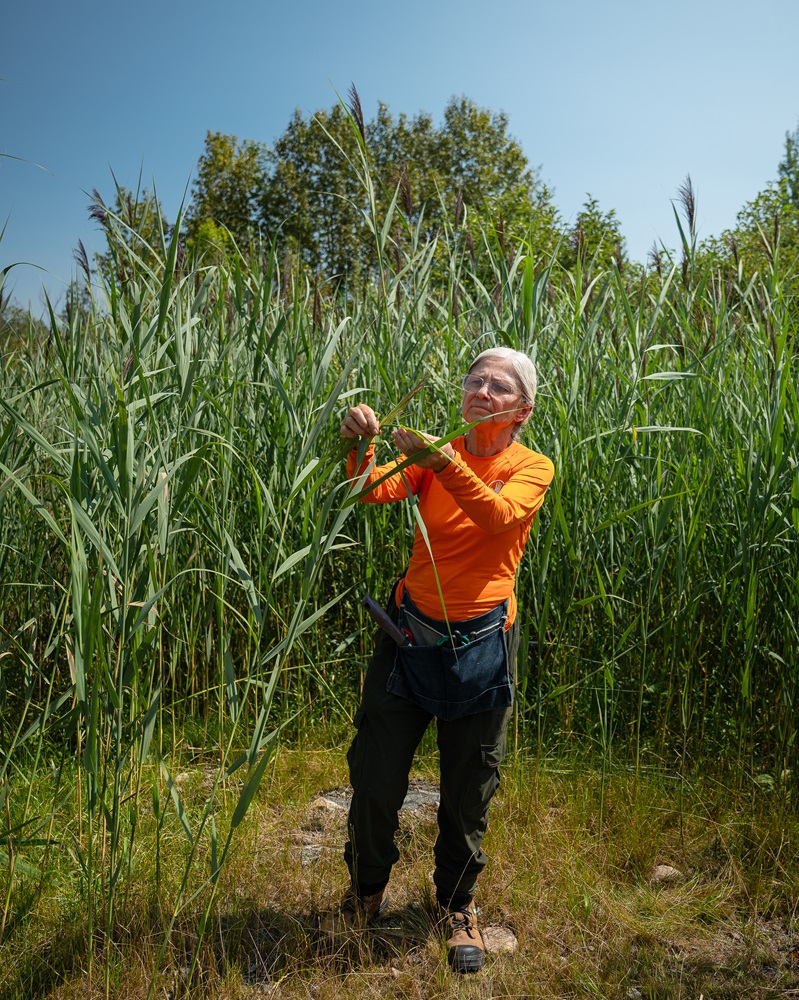U-Links Centre for Community Based Research has kick started a year-long investigation analyzing the threat of invasive phragmites to four watersheds in the northern part of Haliburton County.
Jim Prince, U-Links co-chair, said the nonprofit recently received $20,000 from the Invasive Species Centre to identify patches of the plant – described as one of the most dangerous and prevalent invasive species in Ontario – on Redstone, Kennisis, Growler, and Lipsy lakes in Dysart et al.
The effort, led by a group of more than 25 County-based volunteers, will see approximately 200 kilometres of roads assessed. Prince said U-Links will also map out 20 public water access locations across the County, to see how widespread the problem is.
“Managing invasive phragmites has been identified as a priority in Ontario. The Ontario Phragmites Action program is a new effort to enhance a coordinated response to invasive phragmites across the province,” Prince said, noting the effort is provincially funded. “The primary objective is to expand collaborative action on invasive phragmites across Ontario.
“Haliburton County does have some reported invasive phragmites and it is important to further understand the extent of the problem here,” he added.
Also referred to as European Common Reed, invasive phragmites has been prevalent in Ontario for decades. The Ministry of Environment, Conservation, and Parks (MECP) describes it as a perennial grass that largely invades wetlands and beach areas. The plant spreads quickly, out-competing native species for water and nutrients. Once settled, it releases toxins from its roots into the soil to hinder the growth of and kill surrounding plants.
Because of its ability to change ecosystems, invasive phragmites is a threat to fish, birds, and land-based animals.
Prince said it’s a major problem in much of southern Ontario and stretches as far north as Sudbury and Sault Ste. Marie. Early indications, he said, suggest invasive phragmites hasn’t completely taken hold in Haliburton County – yet. He’s hoping by identifying problematic areas, U-Links can establish a plan to eradicate the plant before it spreads.
The organization enlisted the help of Lynn Short, a horticulture professor from Humber College, who has extensive experience identifying and removing invasive phragmites around Georgian Bay. Short came to Haliburton County over the summer to train local volunteers.
“Lynn has perfected a removal technique – basically you take a shovel and dig at a 45-degree angle and remove the roots, which are called rhizomes. If you carefully do that in targeted spots, it’s possible to effectively remove it,” Prince said.
Several areas Short has treated on Georgian Bay have shown signs of life – with native plants taking over again.
U-Links has identified several sample removal plots it would like to work on – near Kennisis Lake – though will need to apply for funding in 2025. There will likely be money available, Prince said, with the Ontario government investing $16 million into invasive phragmites identification and eradication over the next few years.
While many may not know invasive phragmites by name, Prince said most can identify it. Capable of growing up to five metres tall, the plant bunches in wetland along roadways. In impacted areas, there can be up to 200 plants per square metre.
“It takes over so quickly. It already has in many urban areas south of us. The good news story here is we’ve got patches of it, yes, but they’re not huge plots yet. We have a chance to stop this before it fully takes hold,” Prince said.
Sara Gregorini and Frank Figuli are the project leads at U-Links and have been working with volunteers and three intern students from the University of Guelph on mapping. Most of the mapping has been complete, Prince said.
One of the benefits, he believes, is U-Links will be able to add to an online database showing anywhere invasive phragmites is found in Ontario. Right now, he called Haliburton County a “data desert”, with very little information available.





